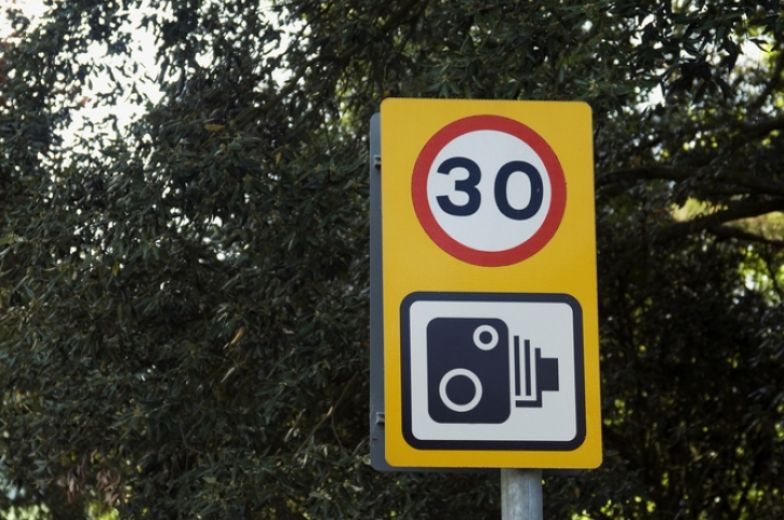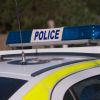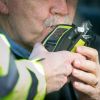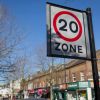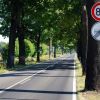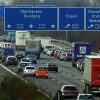With trees and bushes having sprung to life, over half (53%) of motorists say obscured signs are a frequent occurrence on their journeys, with a further 39% saying signs are occasionally harder to see in the warmer months. Only one-in-10 drivers (8%) say obscured signs aren’t a problem on roads near them.
While plentiful foliage is a welcome sign of spring and good for wildlife, the RAC’s findings reveal that out-of-control foliage can have a detrimental effect on safety behind the wheel. More than four-in-10 (42%) motorists who noticed signage obscured by foliage said it led to them accidentally breaking the speed limit, and a quarter (26%) said they missed important information that compromised theirs or someone else’s safety. 28% claimed to have missed a turn and nearly one-in-10 (8%) said they ended up driving in the wrong direction.
A blooming problem
Concerningly, ‘red circle’ signs that tell drivers what they must do seem to be the ones most often hidden by untrimmed trees and bushes. Over half (52%) of drivers said 30mph signs were the most obscured by foliage, where a further four-in-10 (39%) said 40mph signs were hardest to see and 16% said 20mph signs were overgrown.
In second place after speed limits, two-thirds (66%) of drivers said signs that provide directions and information or indicate an upcoming motorway junction were the hardest to spot. A further 42% felt other ‘red triangle’ signs, that warn of changes in road layout and hazards such as junctions, dual carriageways ending and school crossings, were either partially or fully obscured, while 35% said ‘give way’ signs were difficult to detect.
The RAC’s research also revealed that most drivers (92%) only realised signs had been obscured when passing them, by which point it may be too late to react to upcoming hazards. Four-in-10 (38%) said they had to rely on local knowledge, as they knew where the sign was but couldn’t see it.
But worryingly, nearly a fifth (18%) said they only realised a sign was obscured after noticing a speed limit repeater. These signs could be placed as far as 450 metres after the first ‘terminal’ sign on a single or dual carriageway that indicates the start of a restriction or requirement – suggesting drivers might be unknowingly speeding as a consequence of overgrown foliage.**
Safety implications
The RAC’s research also found that unkempt vegetation isn’t just causing issues for road sign visibility – it’s also creating danger for motorists at junctions or roundabouts. Of those who notice road signs are obscured, four-in-five (81%) drivers said too much foliage makes it difficult to pull out of a junction or roundabout safely.
As a result, more than half (58%) of drivers questioned felt strongly that foliage shouldn’t be allowed to grow out of control as it compromises road safety. An additional third (28%) said they expect foliage to be cut back considering how much they pay in council tax. One-in-10 (9%) understood that council budgets are tight and cutbacks must be made, while just 3% don’t think obscured signs cause any problems for road users.
Perhaps unsurprisingly, 48% said signs were most overgrown on rural roads while only 9% said they were obscured on urban ones. A further 43% reported signs as equally difficult to spot on both road types.
RAC Breakdown spokesperson Alice Simpson said: “In parks and gardens foliage is a welcome sign of spring, but on the roads it’s an entirely different matter if vital information like speed limit changes aren’t visible.
“It’s especially concerning that speed limit signs are often the hardest to detect and drivers are left guessing what the legal limit is before they spot a smaller repeater sign. Any amount of excessive speeding puts everyone on the roads at grave danger, especially on minor and local roads where there’s a greater number of pedestrians.
“Drivers shouldn’t be left to rely on their local knowledge and navigation apps to know if there’s a change in speed limit or if a junction is approaching. And new in-car systems that normally detect road signs and display them on the dashboard are redundant if a sign isn’t visible. Of course, it’s still the motorists’ responsibility to drive at an appropriate speed, whether a road sign is visible or not.
“While we realise local councils are under enormous pressure financially, we nonetheless ask them to inspect all the signs on their networks and do everything in their power to ensure they are clear and visible to drivers, as it’s these signs that can save lives.”
Motorists can also do their bit by reporting obscured signage – something that is quick and easy to do on the RAC website using the FixMyStreet postcode search functionality. By entering their postcode, users will be directed to FixMyStreet’s online map where they can report overgrown vegetation.

RAC sale – up to 33% off*
• Roadside cover from £5.29 a month†
• We get to most breakdowns in 60 mins or less
• Our patrols fix 4/5 breakdowns on the spot

*Research conducted on RAC’s behalf by Online95 among 2,027 UK motorists during August 2023, all of whom drive at least once a month.
**Page 75, Table 8-4: Size, recommended spacing and minimum clear visibility distances (CVD) for repeater signs, DfT’s Traffic Signs Manual

